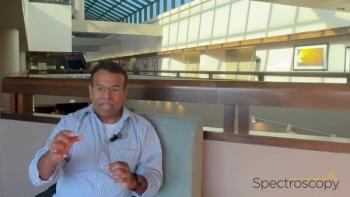
ELISA and SERS Used to Identify Compounds in Artwork
Spectroscopic techniques detect proteins, naturally occurring components, and synthetic materials in paintings.
The Metropolitan Museum of Art (New York, New York) has teamed with Columbia University (New York, New York) to use enzyme-linked immunosorbent assay (ELISA) using surface-enhanced Raman spectroscopy (SERS) nanoparticles to determine the organic and inorganic compounds that compose various pieces of artwork. Through funding provided by the National Science Foundation (NSF) Chemistry and Materials Research in Cultural Heritage Science program, the team hopes to detect the proteins, naturally occurring components, and synthetic materials in paintings.
According to the team, understanding the construction of a painting is essential for understanding its historical significance, authenticity, and best method of preservation. Knowing the materials used to create the painting, and whether these are animal protein-based, oil-based, or naturally occuring, can greatly affect the approach to conserving the work, the interpretation of the work, and the ability to detect if the work is genuine or counterfeit.
Although Fournier transform–infrared spectroscopy (FT-IR) and gas chromatography mass spectrometry (GC–MS) are the standard techniques used to detect organic compounds present in paintings, each has limitations. FT-IR quickly determines the general class of the compounds, but does not offer the specificity to further qualify these compounds. GC–MS provides that specificity, but requires both extensive sample preparation and user expertise.
Looking for a cost-effective, simple, clear, specific, and reproducible alternative, the team has employed antibody-based technologies, such as enzyme-linked immunosorbent assay (ELISA) using surface-enhanced Raman spectroscopy (SERS) nanoparticles. With ELISA, antigen-antibody complexes are detected when they attach to a “reporting system,” yielding an intense color response that is recorded by a spectrophotometer. This “reporting system” refers to a SERS nanoparticle, which binds the targeted antibody, increases the Raman signal of the reporting dye, and emits a colored spectrum visible to the naked eye.
The co-leaders of this research team are Julie Arslanoglu, from the Metropolitan Museum of Art, and John Loike, from the Columbia University College of Physicians and Surgeons. This story first appeared on the National Science Foundation website on March 30, 2011.
Newsletter
Get essential updates on the latest spectroscopy technologies, regulatory standards, and best practices—subscribe today to Spectroscopy.





